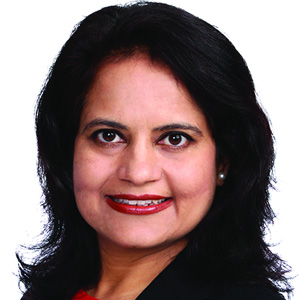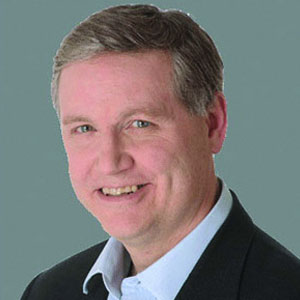THANK YOU FOR SUBSCRIBING

Leveraging Infrastructure: A Game Plan for Increasing Your Team's Velocity
Jeff Jacobs, CIO/Global IT, OCLC


Jeff Jacobs, CIO/Global IT, OCLC
You may be running fast…in the wrong direction.
I’ve been an avid sports enthusiast my whole life, both as a participant and a fan. And like any competitor, I know that how fast you go only matters if you’re heading in the right direction.
“A good technology strategy is easy to assemble when it’s aligned with the business”
That’s the problem with development efforts that focus on improving specific feature lists, processes and project turnaround times. If you’re headed in the wrong direction, then you’re only doing the wrong things faster.
At OCLC, we decided that in order to improve our overall velocity, we needed a heightened focus on direction as well as speed. To do that, we concentrated on a strategy to leverage a new converged architecture to make sure that when we went faster, we were going the right way.
Where is your goal line?
OCLC provides cloud-based software for thousands of libraries around the world. This includes both back-office applications needed to run modern libraries, and user-facing services that help people find and access library materials anywhere in the world. In addition, OCLC builds and maintains WorldCat, the world’s largest database of library bibliographic information, with data about more than 2 billion items owned by libraries worldwide. We are a cooperative—that operates on a model by which our members share the costs of our services. This means that we have to be competitive because we are often evaluated against for-profit companies that offer similar services.
OCLC shares objectives that stem from our members’ sense of mission and purpose. We are not driven to return a profit to shareholders; we are driven to help our members share knowledge in ways that help people achieve personal and educational goals. I have experience in both for profit and not-for-profit organizations and I know firsthand that both are equally important and challenging.
That distinction may not sound important when discussing how to implement a converged infrastructure, but I assure you, it is vital. Because while I can offer you three relatively standardized ways to help get a program like this started, the most important step will depend on you. You will need to set a goal that exists above-and-beyond your IT organization’s environment in order to justify the changes you’ll be making. Your strategy must be a reflection of needs of the business.
The drills—your baseline metrics
It’s important not to confuse goals with metrics. “Decreasing downtime” isn’t a goal. It’s one metric out of many. When working toward understanding how to increase development’s velocity, you’ll first want to establish a baseline of meaningful performance metrics. Depending on your systems, metrics might include service availability, labor needed for updates and number of network connections, among others.
It’s also important to capture the initial state of your most important metrics. You’ll be comparing your team’s results against these numbers to see how you’re progressing. Make sure to establish a baseline for every process that’s important to your core business functions.
The bench—your component inventory
Until you understand your current assets on a platform, database, language and line-by-line coding basis, you’ll never really know with confidence which processes, tools and hardware you need to keep, improve or eliminate.
This is the heart of a converged architecture strategy. You’re deploying infrastructure fit for purpose, not fit for the masses. Your objective—a set of network, server, hardware and software resources optimized to work together across multiple (ideally all) stages of development to address multiple business applications.
Now is when you need to review the benchmarks from the first step against both individual components and how well they work together in a converged environment. You may have a very high-performing component or system that is simply not going to work with your long-term business goals. You may have a very low-performing application that, nevertheless, is vital to moving forward.
Making cuts—removing the snowflakes
The benefits of converged architecture to your long-term development velocity depend on having all of your components and environments within a single system. However, environments pose another challenge altogether. You have to eliminate unique environments or “snowflakes” because they have a direct impact on your development team’s velocity. Those one-off environments, software configurations, pieces of hardware or even processes that don't fit within your new, converged architecture must be eliminated.
Operating with snowflakes in place is like asking an outstanding basketball player to play on your football team; that player might be a talented individual, but unable to help your team move toward your goal. Snowflakes can slow your progress by increasing unnecessary complexity and multiplying errors because development environments don’t match test or production environments.
On the other hand, when the critical components of your network, compute and storage layers all work together, you’ll benefit from greater reliability, easier quality assurance and faster time to market—increased velocity.
It’s not always easy. You may be forced to jettison some projects that have a long history and many internal fans. But if a component doesn’t work as part of the team, it will only slow or pull the rest of your organization in the wrong direction. You lose velocity. That’s the danger of snowflakes; each “unique and special” environment, piece of hardware or procedure takes away your team effort.
So how do you manage the cultural aspects of moving to a converged infrastructure? How do you deal with the pain of “melting snowflakes” that may have a lot of support? Focus on the vision and the end game.
Going for the goal line
Aligning the project with your organization’s vision is up to you. What does your company do? What do your owners and leaders feel strongly about? What are your customers trying to achieve? Find out. Because in the end, that’s what will bring your strategy and whole team together to rally around a project of this scope.
For OCLC, it’s all about helping libraries around the world share knowledge. Our members are our heroes. They’re dedicated to helping people achieve more through education and research. So when I put together our plan to improve our velocity through implementing a converged architecture, I made sure that every part of that plan was a step toward the goals our members want to accomplish:
• Less downtime—so that library users don’t have to wait for materials • Faster updates—so that new features could improve efficiencies for our users • Increased throughput—so that requests and repairs get handled before they become long-term concerns.
Technology tools exist to achieve business solutions. Optimization means nothing unless it helps your customers achieve their goals.
Winning as a team
A good technology strategy is easy to assemble when it’s aligned with the business. You can admit that there will be challenges. Document them and share them. Provide full transparency. The openness and increased transparency of the process—both before and after—will help mitigate those concerns. There will be costs in the short term, but you can point to increased credibility and confidence in the marketplace, which leads to a stronger brand identity. Staff may be reluctant to discard particular processes, hardware or “snowflakes,” but they’ll be more productive and less frustrated in the long run. And they’ll better understand how their actions contribute to the team’s overall success.
We’ve already seen some benefits at OCLC to this strategy. We’ve had a quick uptick in overall availability of our services merely by changing processes and procedures.
As the CIO, you’re the coach. You know your players. You know the tools you have at your disposal. You know the players that work and the ones that don’t, even though they might be team favorites. If you can set a goal based on your organization’s vision, you can inspire your team through all of the hard work and achieve greater velocity, marking a pivotal change in how you manage your IT infrastructure.












